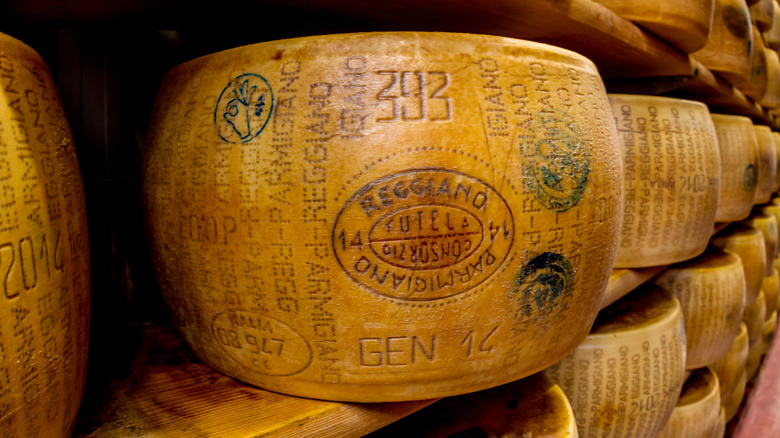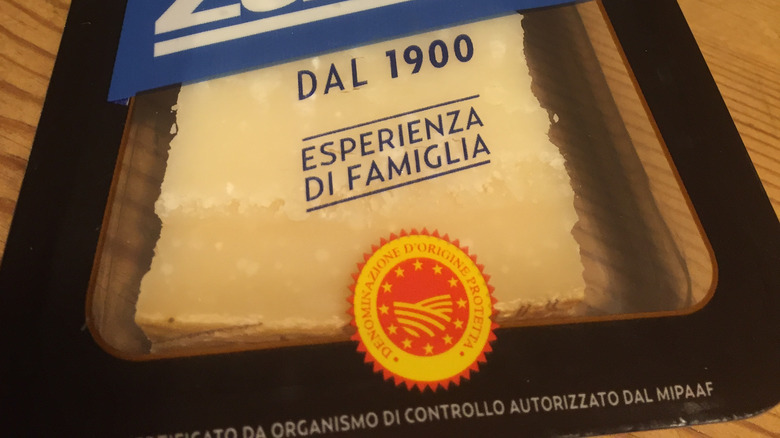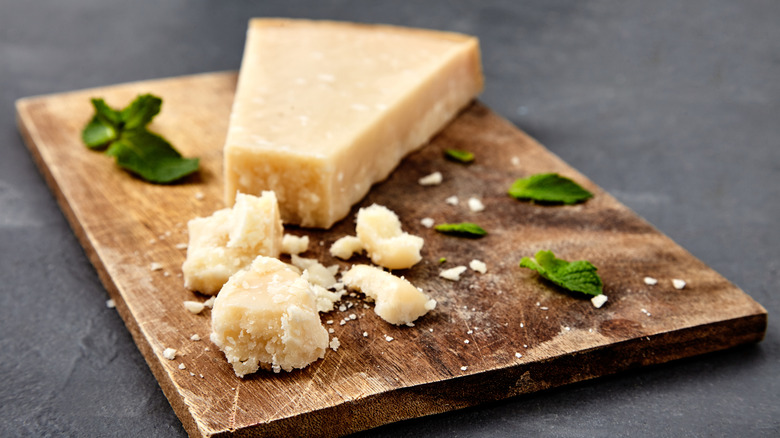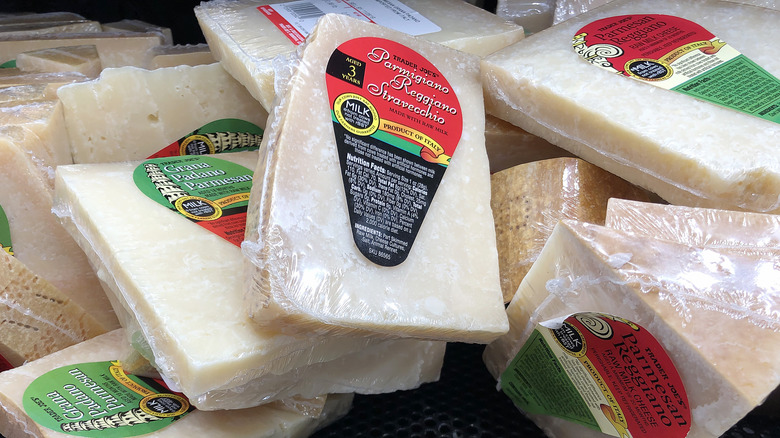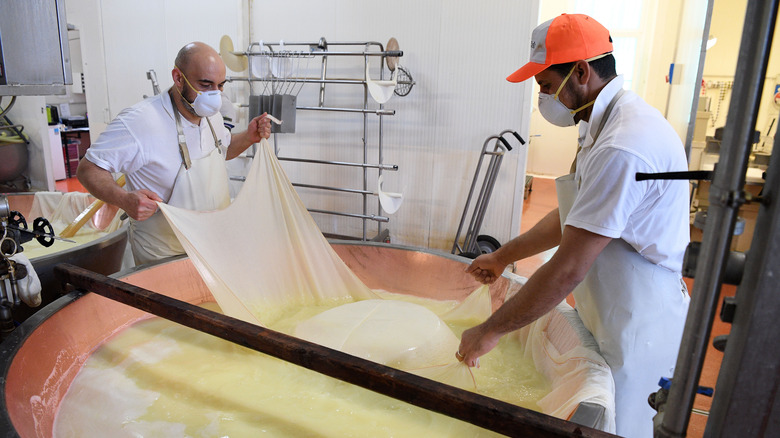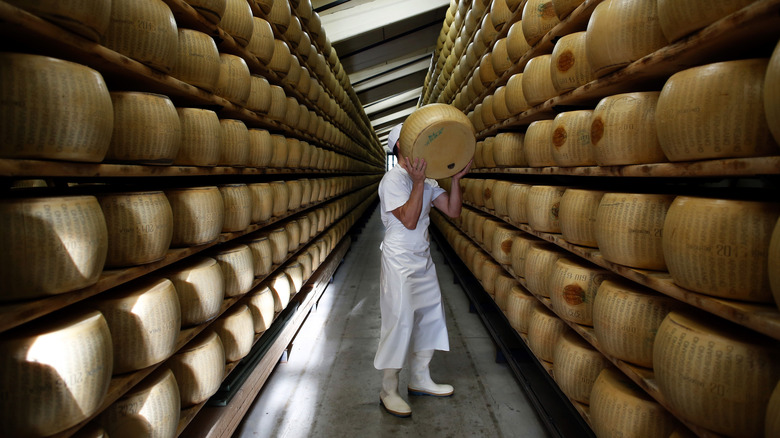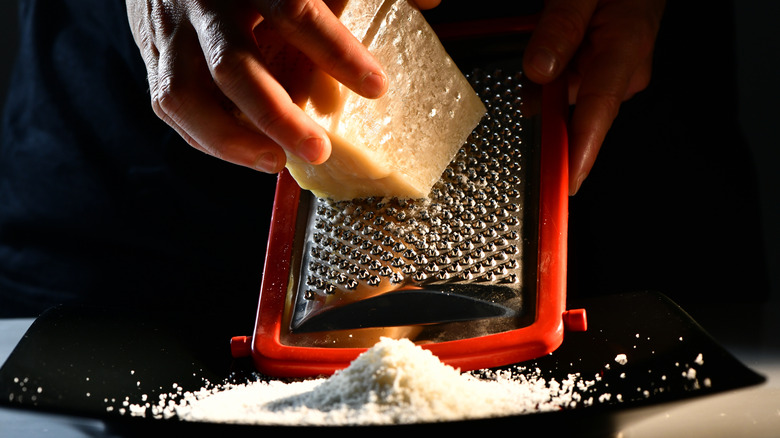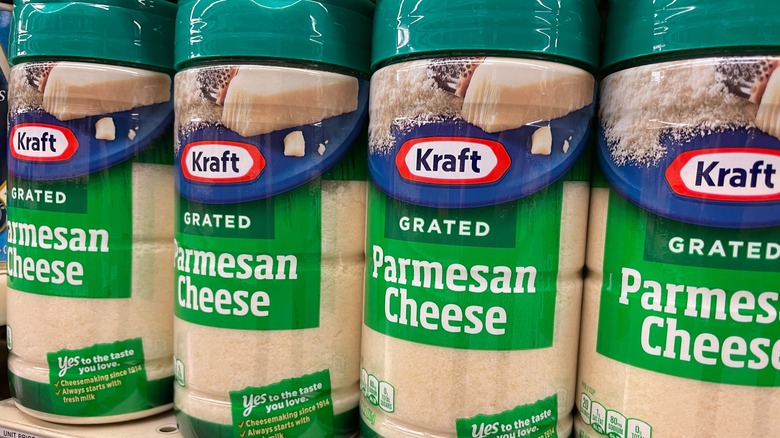The Parmesan You Know Might Not Actually Be Real Cheese
Whether we are talking about pizza, pasta, or a classic dish like Osso Bucco, Italian food is considered to be the most popular cuisine internationally, and the second most popular in the U.S. The legacy of and fierce nationalistic protectiveness that Italians exhibit toward their food is legendary. Few other cultures have developed the kinds of rules and regulations to protect their culinary heritage from farm-to-table in such ritualistic ways as Italy, and this shows in the quality of the foods that have been protected. From meats like Prosciutto di Parma to cheeses like Parmigiano Reggiano, there is a guarantee of superiority and consistency that comes with the purchase of and consumption of these products by virtue of where they come from.
This matters and this is why when consumers in countries like the U.S. purchase products marked as authentic without manufacturers upholding the strict regulations Italians have come to expect, it does a disservice to consumers and is an affront to the legacy of Italian food culture. One of the foods that have been most susceptible to being bastardized for the sake of profit is parmesan cheese. In an effort to educate consumers as to what they are really getting and how to be more discriminating buyers, here are some important facts to keep in mind the next time you think you are buying authentic parmesan cheese.
Why does DOP matter?
The term Denominazione di Origine Protetta (DOP) — or Protected Designation of Origin (PDO) — is a certification that was developed in the mid-1900s by the European Union to help legitimize and regulate three important aspects of the products that are granted this certification: reliability, traceability, and authenticity (via Webstaurant Store). The use of these Geographical Indications (GIs) was specifically intended to protect these products from being reproduced and marketed as the real deal by foreign countries.
For a food item to obtain DOP certification, the strictest guidelines established by the Italian government must be upheld from beginning to end of production. Where Parmigiano Reggiano is concerned, this is a multi-faceted list dictated by 900 years of precedent dating back to the origins of parmesan production in the 12th century in the regions of Parma, Reggio Emilia, and Modena. These provinces are known for their distinct microclimates responsible for native flora which gives the milk obtained from local cows a very unique flavor profile. Everything from how the cows are cared for to how the milk is harvested, the type of rennet used to make the cheese, and the length of time the cheese must be aged are strictly monitored.
In order for a parmesan cheese to be recognized as having DOP certification, its rind must be stamped with markers indicating its origin and lot number. Additionally, the packaging should be donned with a red and yellow label with the words "Denominazione di Origine Protetta" and a serial number listed on it.
How do I spot a real parmesan cheese versus a fake parmesan cheese?
The first line of defense in determining if you are getting a real Parmigiano Reggiano versus a fake parmesan cheese is to look for the DOP stamp on the rind of a wedge of parmesan. You should also search for the red and yellow DOP label on the packaging. If you are uncertain, there are some characteristic features of a real Parmigiano Reggiano that make it distinct from its less sophisticated knock-offs.
Traditional Parmigiano Reggiano from Emilia Romagna has a characteristically fruity and nutty flavor, with a hint of grassiness in the background. It is a dry cheese that tends to crumble easily and has a salty bite to it. When you place it in your mouth you will instantly note a kind of graininess that yields to a delicate smooth texture as it melts against your tongue. The longer the cheese has aged, the more potent yet delicate the flavors and the more crystallized the texture becomes. Imitation parmesans don't have anywhere near the sophistication of flavor and lack the texture that the real deal does.
And if your palate fails you — as some knock-offs can be extremely convincing in their execution — price is always a factor. If it seems too cheap to be true, it probably is. Real Parmigiano Reggiano is not inexpensive. You pay for both the quality of the ingredients as well as the expertise of the artisans who created it.
There is no such thing as a domestic parmesan cheese
Per Forbes, if a cheese is labeled "Parmesana, Parmabon, Real Parma, Parmezan, and Parmezano" it is not real parmesan cheese. There are a lot of cheeses manufactured domestically that are attempting to pull the wool over the eyes of consumers by cleverly titling their products in a way so as to confuse them. Let us be clear — if your cheese did not come from the region of Italy where Parmigiano Reggiano is produced and is not labeled properly with the DOP certification and stamp, then it is not real parmesan cheese.
There is no such thing as domestically produced parmesan cheese. There are only cheeses that are produced using the methodology, techniques, and processes of those produced in Italy, but they cannot by law be called real parmesan cheese. At best they can be called a parmesan-like cheese or a cheese that has been produced in the style of parmesan.
Cook's Illustrated notes two factors that make domestically produced parmesan impossible. In Italy, what cows eat is mandated, requiring that they consume at least 75% grass. These mandates do not exist in the U.S., nor are the majority of cattle raised here pastured. Additionally, real Parmigiano Reggiano is always made using a high-fat percentage raw milk. In the U.S., milk is typically pasteurized and the milk used is generally lower in fat than its Italian counterpart. This isn't to say that a flavorful parmesan-like cheese cannot be made domestically, it is simply a case of buyer beware.
Why is real parmesan cheese so expensive?
According to Insider, a wheel of authentic Parmigiano Reggiano can come with a price tag of $1,000 dollars. At an average weight of 88 pounds per wheel, this works out to about $11 a pound. The reason it is so expensive is partly a result of the limited area in Italy in the region of Emilia Romagna where it can be produced. Only 329 dairies in that region are certified to produce Parmigiano Reggiano the traditional way, per Zingerman's. Its cost is also dictated by the complex process involved in making the cheese.
Each wheel requires approximately 131 gallons of milk to produce and must age for at least 12 months. Once the milk is combined with rennet in a copper vat, it is heated to ensure that any bad bacteria has been eliminated. Next, the curds are allowed to sink to the bottom of the vat where they coagulate into a 220-pound mass. This mass is then split in half and each half is transferred to a mold. The cheese is subsequently rotated several times until it is encased in its final DOP stencil. After four days, the stencil is taken off and the wheels are placed into a brine bath for 19 days. The brine is responsible for creating Parmigiano's distinctive rind. Each wheel is inspected by a cheese master for quality control before being branded. Some wheels will age for two years and up to 10 years. The longer the cheese ages, the more expensive it becomes.
Why is parmesan cheese being microchipped?
Per FoodNavigator, parmesan cheese is big business. An estimated 6,000 tons of Parmigiano Reggiano are sold annually to the tune of approximately $2.5 billion dollars in revenue. However, the Parmigiano Reggiano Cheese Consortium estimates that an additional $2.5 billion dollars worth of counterfeit parmesan is sold annually, making it one of the most lucrative counterfeit food products in the world. Since DOP certification is sparsely regulated outside of the European Union, it often doesn't effectively deter manufacturers from producing parmesan-like products aimed at deluding consumers into believing they are getting the real thing. It has been a conundrum of epic proportions with serious financial ramifications.
The solution moving forward may surprise you. It involves the collaboration of historical food production with the innovation of modern technology. In addition to a cheese marker developed in 2002 by Dutch company Kaasmerk Matec, which is made of casein, glycerol, and alcohol that can be placed upon DOP-certified wheels of Parmigiano before being sent to market, a new microchip is being researched by p-Chip Corporation. This food-safe transponder is designed to be durable and easy to implement. The combined use of the marker in conjunction with the microchip is the next generation in the fight against parmesan fraud.
Is there a nutritional benefit to eating real parmesan cheese?
While according to The Guardian there is local Italian lore suggesting purported medicinal qualities of real Parmigiano Reggiano — including being an aphrodisiac and good for your gut — there are some real reasons that the cheese can and should be incorporated into a healthy diet. WebMD notes that real parmesan is naturally lactose-free, making it an oddity among cheeses crafted using cow's milk. It is also chock full of a number of important micronutrients, including calcium, phosphorus, sodium, potassium, magnesium, and vitamin A.
Healthline goes on to mention that parmesan is thought to be a complete protein, suggesting that it contains all the essential amino acids necessary for optimal health. Additionally, because of the aging process real parmesan undergoes, it is a highly digestible protein. During aging, the protein experiences what they call "pre-digestion," where the protein endures changes making it more accessible for absorption in contrast with other cheeses.
It is noted, however, that if someone has a casein allergy — meaning they are allergic to the protein in dairy — parmesan is contraindicated. Additionally, if someone is concerned about saturated fat intake, like with all dairy, parmesan cheese may only be suitable for consumption in small quantities. As with many foods, moderation is the key.
Beware of grated and shredded parmesan cheese
Beyond the controversy of real versus fake parmesan cheese, there is another factor that should make you pause the next time you reach for that convenient container of pre-grated parmesan or package of pre-shredded parmesan cheese — preservatives and fillers. Many of these cheese products contain potato starch to keep the cheese separated, natamycin to prevent the cheese from molding, and cellulose or powdered wood pulp as a filler.
While the addition of 2% to 4% percent of cellulose is recognized as not potentially hazardous to your health, manufacturers regularly add far more to their pre-shredded and grated cheese products. Additionally, manufacturers like Castle Cheese Inc, have been caught labeling a combination of swiss, mozzarella, cheddar, and cellulose as parmesan, when there wasn't an ounce of the real deal in there, per Inc.
Certainly, pre-grated and shredded cheeses are easy and affordable, but yet again, you get what you pay for. It is definitely worth spending a bit extra to not only obtain something that isn't replete with wood pulp, but that is actual Parmigiano Reggiano. It is fairly simple to grate real parmesan from a block using a microplane or box grater. And because it has such a rich, pungent flavor, a little goes a long way in satisfying your craving for that umami-forward profile that'll amp up virtually any dish you are concocting in your kitchen.
